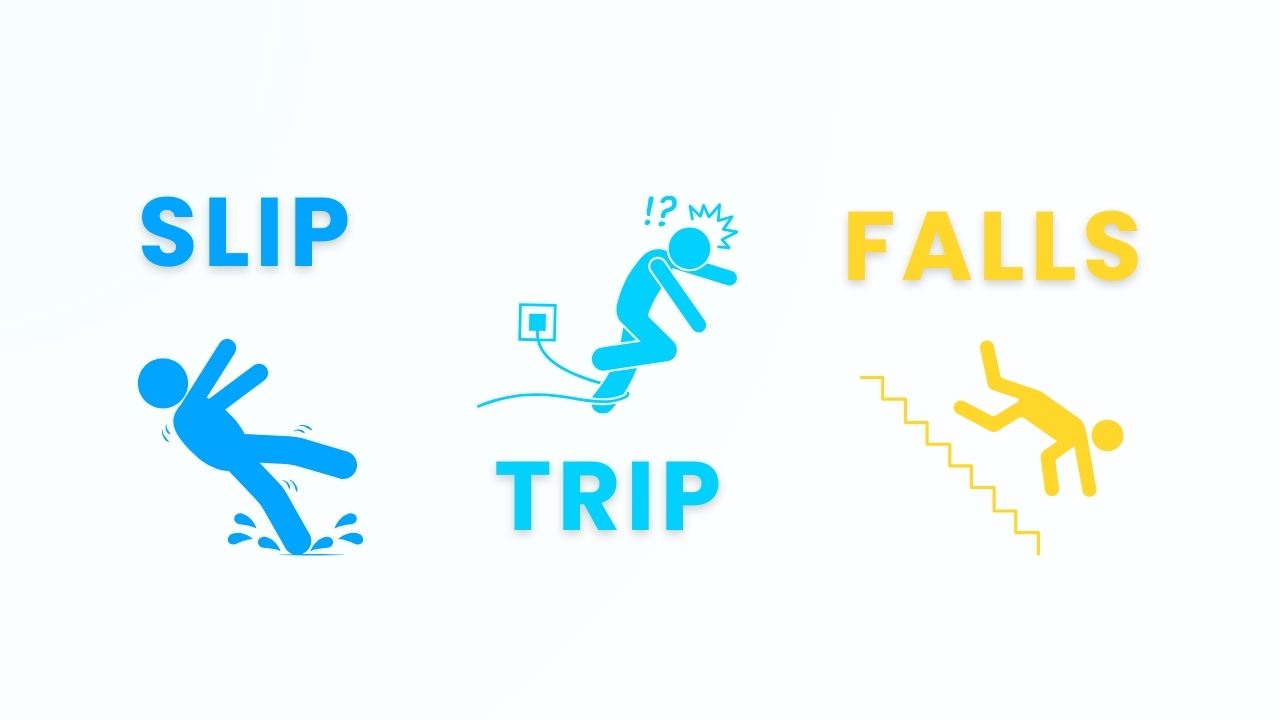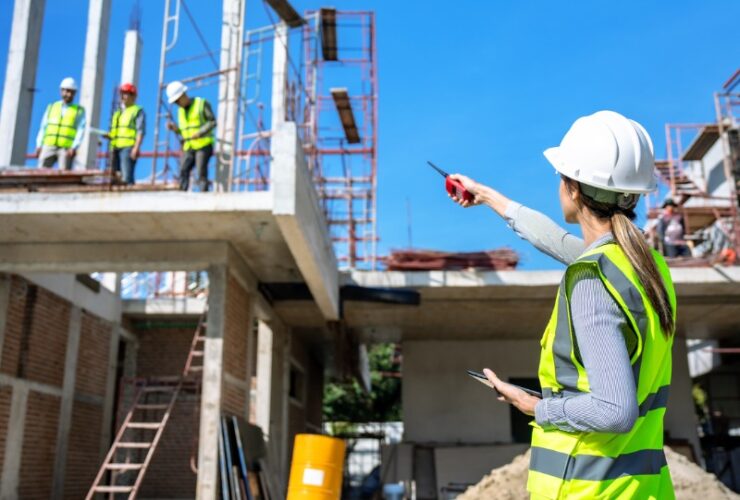5 Tips For Preventing Slips Trips And Falls In The Workplace
Officially, OSHA’s trip hazard height is a quarter inch. Any change in floor level that is ¼ inch or more constitutes a tripping hazard. Examples of common tripping hazards include uncovered hoses, cables, wires, or cords across walking surfaces. The construction industry is one of the most labor-intensive industries, and an active and fit workforce is of prime importance. Organizations across the world strive to enforce regulations and policies to make sure that the workplace stays safe and secure for the teams. Safety measures are primarily directed towards more considerable hazards, such as slips, falls, and trips, which are the most common incidents that shake the entire team’s performance while resulting in a heavy blow to the company’s finances.
Take a look at some mind-boggling cases and financial impacts on companies below:
Common Slips, Falls, and Trips Accidents In The Construction Industry
The Health and Safety Report 2022-23 revealed that over 561,000 cases of non-fatal workplace injuries were reported. Nearly 32% of these cases were of slips, falls, and trips. Moreover, 179,520 employees were recorded to have been injured during such incidents.
According to the Occupational Safety and Health Administration (OSHA), slips and falls account for 20% of all workplace injuries. Notably, slips and falls are the second leading cause of accidental deaths in the workplace, responsible for 15% of all such fatalities following motor vehicle accidents. The financial impact is substantial, involving billions of dollars in insurance claims, lost work hours, and expenses related to accidental deaths.
Furthermore, certain occupational groups are more vulnerable to slips and falls. For instance, construction workers experience a high incidence of these injuries, which account for over 150,000 annual construction site injuries. Healthcare workers are also notably affected, with nurses and nursing assistants frequently experiencing slips and falls due to the fast-paced and physically demanding nature of their work environment. Additionally, workers in the transportation and warehousing sectors face higher risks, with slips and falls constituting a considerable percentage of their total workplace injuries.
Understanding the Slips, Trips, and Falls Hazards
Incidents of slips, trips, and falls can occur due to many reasons—from uneven working surfaces to unstable ladder positions. For preventing such incidents it’s best to have a complete understanding of the causes. It can help managers assess risk factors and devise ways to prevent them.

Causes of Slips

For workers wet or oily surfaces, often caused by spills, leaks, or condensation, can become extremely slippery and pose a significant risk for slips. Loose or unanchored rugs and mats can shift underfoot, causing slips, so it’s essential to secure them properly. Similarly, loose floorboards or tiles can be hazardous. It requires regular inspections and timely repairs. Weather conditions like rain, snow, and ice also contribute to slips; using salt or sand can provide necessary traction on slippery surfaces. Taking these precautions helps mitigate the risk of slips and falls in various environments.
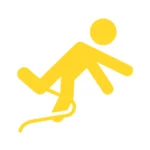
Causes of Trips
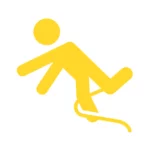
Trips are a common cause of workplace accidents that lead to severe injuries. Uneven or cluttered surfaces, like cords or debris, can cause trips, so keeping walkways clear is essential. Poor lighting can obscure hazards, making adequate lighting crucial in all areas. Loose carpeting or flooring should be repaired or replaced to avoid tripping hazards. An obstructed view can also lead to trips; keeping aisles and walkways clear of equipment is necessary. Changes in elevation, such as steps or uneven flooring, should be marked with warning signs, and handrails or other supports should be provided as needed to prevent trips. The OSHA trip hazard height is officially a quarter inch. A change in floor level that’s around or above this level creates trip hazards in the workplace.
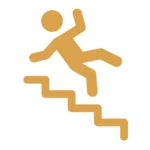
Causes of Falls
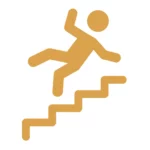
Unfortunately, falls in the workplace are extremely common. A lack of protection, such as guardrails or safety harnesses, significantly contributes to this. Working at heights, like on roofs or scaffolding, poses a major risk; ensuring proper equipment and supervision is crucial. Unprotected edges and openings, like uncovered pits or roof hatches, need appropriate guarding or covering. Ladders and stairs, if not used correctly, can lead to falls; regular training and inspection are necessary. Slippery or uneven surfaces, especially in wet or icy conditions, require slip-resistant footwear and clear walkways to prevent falls.
OSHA Regulations for Preventing Slips and Falls in the Workplace
Slips, falls and trips cause some of the most serious injuries including sprains, strains, and fractures. From neck to arms to legs, employees have experienced severe fractures during the incidents. Apart from this, contusions, bruises, head injuries, and cuts are some other prominent injuries that have caused hindrance in workers’ performances and caused serious health issues. One of the most terrifying injuries is a back and spinal cord injury where employees are prone to getting paralysed forever.
In consideration of such hazards, OSHA has outlined effective regulations to guide the prevention of slips, trips, and falls. The 29 CFR 1916 covers many fall-related regulations. The 1910.22 Regulations outline many points that include:
- Providing safe means to enter and exit from the walking surfaces
- Repair hazardous floors
- Inspecting working surfaces if they are in good condition
- Keeping workrooms clean, safe, and dry
Keys To Preventing Slips And Falls At The Workplace
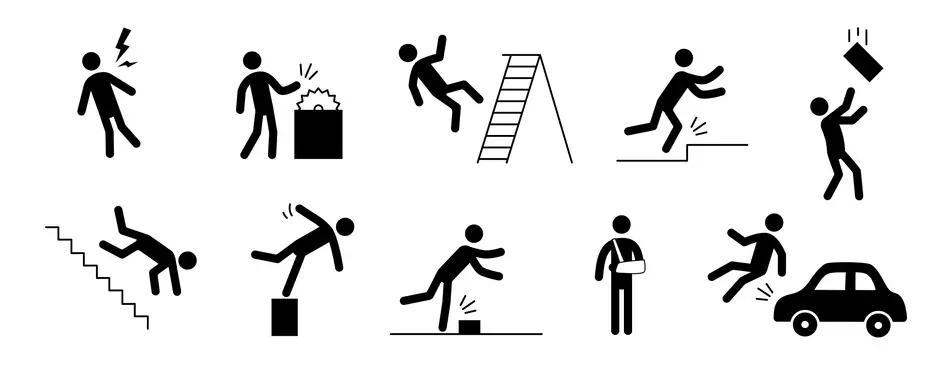
Fortunately, by following the blueprint for safety and preventing slips and falls, you can make sure such incidents are eliminated. Here are the 5 key tips for preventing slips and falls at the workplace. Read on:
Keep Walkways clear and clutter-free:
It’s important to have a clutter-free walkway and working surface. Make sure that the tools are handled and managed properly. They should be placed in a specific place. When tools, nails, and chemicals are spilled in the walkways it causes hazards of falls and trips. So, keep the walkways clear and decluttered.
Use Signs and Boards
It’s crucial to have clear signs and boards to guide the workers. If a floor is wet or slippery, warn your employees with a clear sign board so that they stay vigilant. Similarly, you can custom-create signboards based on the activities and hazards that you may face in your company. Apart from this, posters preventing slips, trips, and falls can help warn the employees as well.
Use Appropriate Gears and Tools
If you are a manager, it’s your prime duty to ensure that every single worker is wearing appropriate gear and handling tools the right way. They should have an awareness of all the hazards in the workplace and what can happen if they don’t follow the rules. Using proper footwear is essential to avoid falls, trips, and slips. Replace worn-out shoes and use slip-resistant accessories. It’s good to go with high boots that keep the ankles and toes safe and guarded.
Improving and Maintaining Floor Quality
It’s important to have a regular and timely inspection of the workspace. You need to have an expert team who can inspect and detect the flaws and shortcomings. Floors and surfaces need to be properly maintained as it helps eliminate incidents of slips and falls. Employees have to drag heavy machinery, staff, and materials. If there are cracks and dents in the surface it can result in spilling of chemicals and materials that can constitute more cases of slips and falls.
Cleaning and Housekeeping
The last most important tip is to have a proficient team of cleaning and housekeeping. Your place of work should stay neat, tidy, and dry. If you get a dedicated team, they can monitor the entire working surface, and in the case of any spills, the floor can be cleaned without wasting any time. Substances like grease and cement are commonly found at construction sites and they are not only the prime culprits to cause slips, trips, and falls but can cause other serious health issues upon getting in touch with the skin.
Where all of these tips are essential to follow be mindful of the OSHA slip, trip, and fall videos that hold a plethora of information to guide both the employers and the employees. It’s essential that your workers should stay aware about all the possible hazards and inform the managers upon experiencing any issue.
The Effectiveness Of Having Preventative Measures At the Workplace
Preventive measures in workplace safety have proven highly effective. According to the Occupational Safety and Health Administration (OSHA), implementing comprehensive safety and health programs can reduce workplace injuries by 20% to 40%.
For instance, workplaces with proper fall protection measures, such as guardrails and safety harnesses, have seen a significant decrease in fall-related incidents according to OSHA Fall Protection Regulations.
Furthermore, compliance with OSHA standards has led to a marked improvement in workplace safety. A study by the Bureau of Labor Statistics (BLS) indicates that workplaces adhering to OSHA regulations experience a 14% lower incidence rate of nonfatal injuries and illnesses (BLS Workplace Injuries).
Not only this, the National Safety Council (NSC) reports that companies with robust safety programs not only protect their employees but also see a return of $4 to $6 for every dollar invested in safety (NSC Safety ROI). These statistics underscore the critical importance of preventive measures and regulatory compliance in enhancing workplace safety and reducing accidents.
Conclusion
Companies all over the world have faced lalawsuits of millions of dollars for being carefree about the health and safety of their employees. It has affected them financially as well as shaking the performance of the business as well. When it comes to employees, many have lost their lives or are unable to earn a living due to life-long injuries. Hence, it’s crucial to have a proper slip, trip, and fall hazard protection policy in the company.

